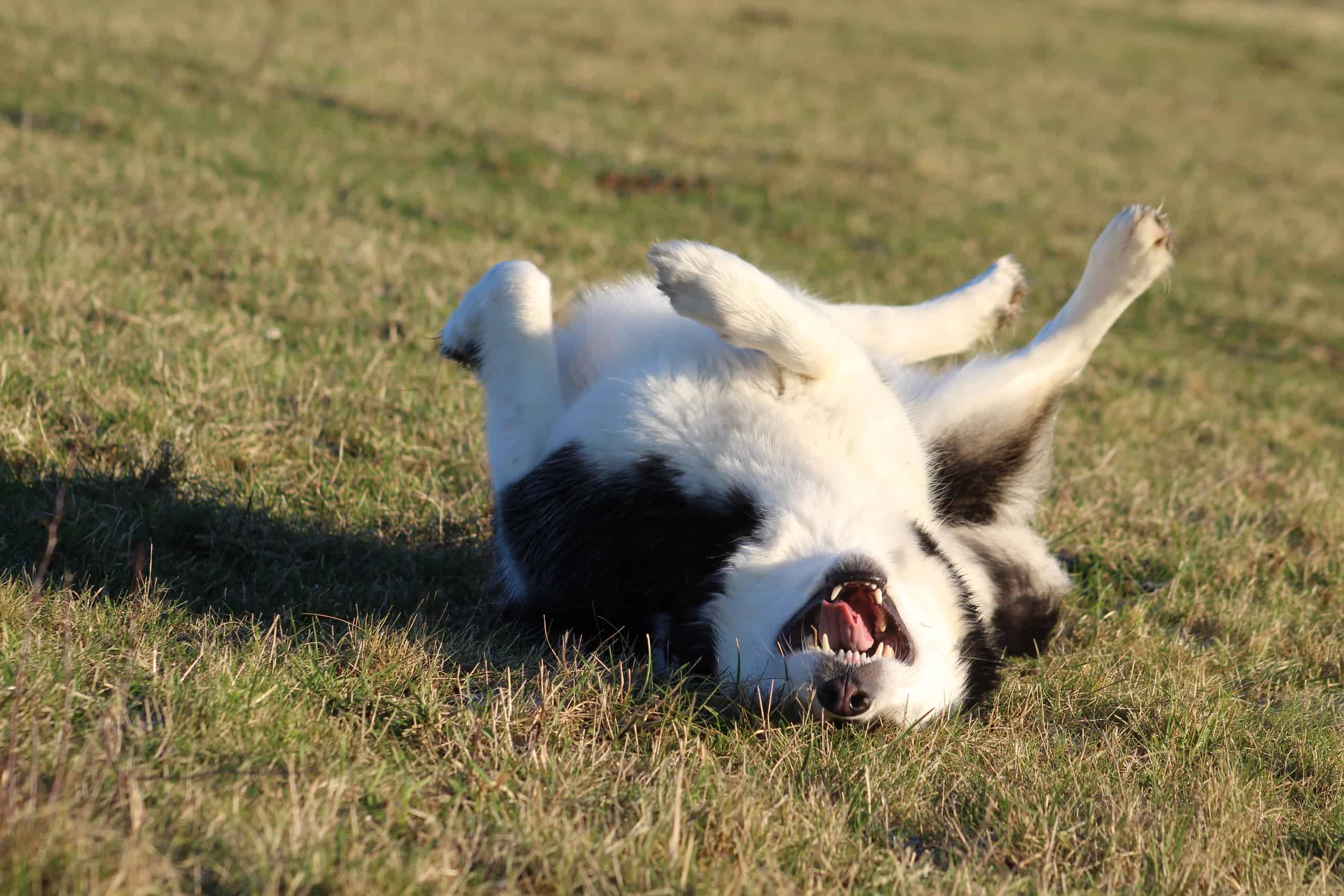Although Alaskan malamutes and huskies often look like wolves, the Native American Indian dog breed will make you do a double take. Below we’ll go over the rich history of this beautiful breed, their temperament, and how you can care for one of these sweet pooches.
Unveiling the Origins of the Native American Indian Dog: A Rich Heritage
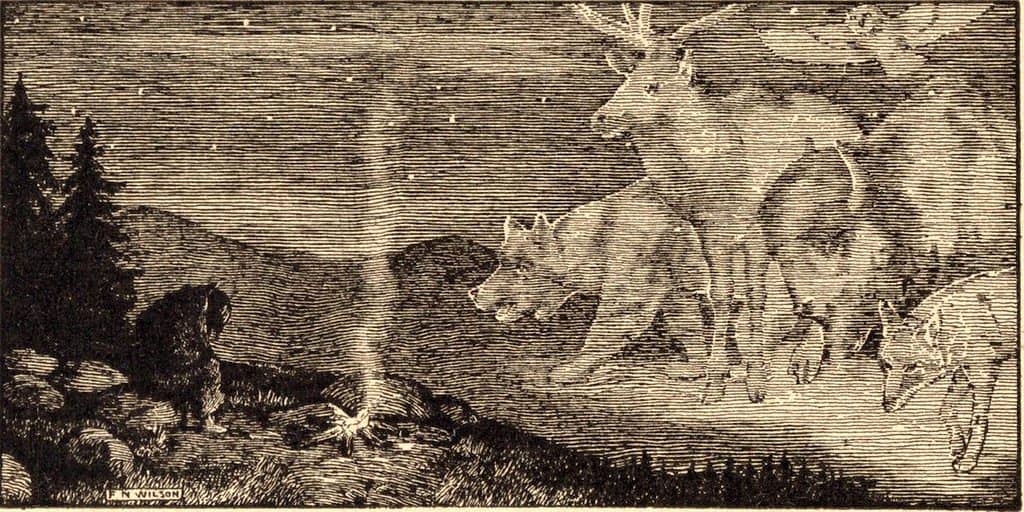
Native American traditions are deeply connected to nature and the animals that inhabit it.
©Frederick N. Wilson, Public domain, via Wikimedia Commons – Original / License
The Native American Indian dog may be 30,000 years old, say the specialists at Animal Corner. It’s probable that the breed coexisted in North America’s heartland alongside a few of the continent’s early Native Americans.
According to some experts, the Native American Indian dog breed may even represent the final connection between wolves and the canine species as we understand it nowadays. However, it’s crucial to comprehend how the colonization of America affected historic canine breeds in order to gain a full image of the manner in which the Native American Indian canine breed came to be.
When European colonists came to America, they carried with them an approach to existence that wiped off the populations of tribes and Native Americans’ lands as well as disease, homicide, and other social ills.
Additionally, they had a permanent effect on the pets they owned. Surprisingly, Europeans at this point didn’t regard hounds as companions in the manner that many native people did at the time.
They were more like vermin or even food to them. As a result, when these immigrants destroyed and demolished villages, the canines residing there were also slain. Since purebred, old Native dogs were extinct for eons, even if certain modern dog breeds have genes that are comparable to those of ancient dogs.
According to historical records regarding these early Native dog breeds, the Native American Indian dog exactly as we recognize it today has been essentially recreated.
Appearance of the Native American Indian Dog
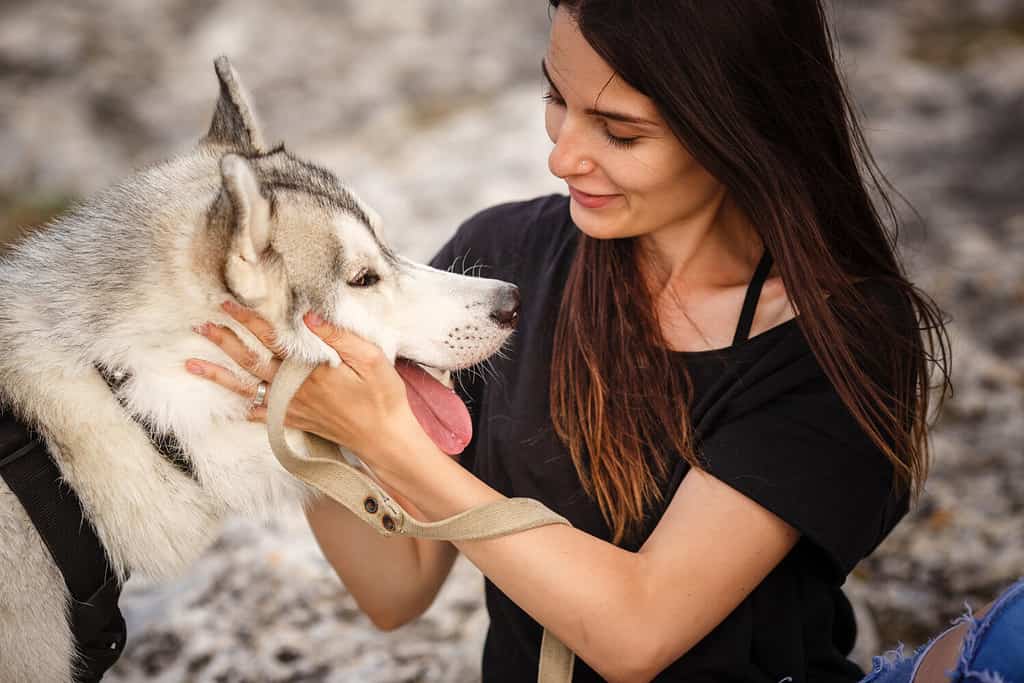
Native American Indian dogs look very similar to huskies.
©Maples Images/Shutterstock.com
American Indian dogs range in size from medium to giant, with males frequently being bigger than females. These pups can weigh from 40 to 100 pounds and reach around 20 to 28 inches tall at the shoulder. The American Indian dog has a powerful, athletic frame and a muscular body.
These canines have regal faces that are emotive. They have a cranium that is somewhat broad and has a distinct stop. Their almond-shaped eyes can have a range of brown or golden hues. The points of the upright, somewhat rounded ears.
Temperament Traits of Native American Indian Dogs: Loyalty, Intelligence, and Spirituality
Native American Indian dogs usually adore their owners and wish to spend as much time as possible with them. The breed is well-known for its devotion, but on the other hand, it may also be restless and uneasy.
It may surprise you to see a mess in your home if you rescue them and then unexpectedly leave them alone for an extended period of time. But, it’s safe to say most dogs that are in a new environment by themselves will leave you a surprise when you come home!
Given that this dog was bred to perform a variety of activities, it is not shocking that its level of intellect is exceptionally high. They are extremely adaptable and love to please people. They require a strong, assured leader, but because these dogs are delicate, it is not needed to use a harsh tone of voice when training them.
These canines have received training to work in a variety of fields because of their ability to learn and adaptability. They make great weight pullers, guard dogs, hunters, and therapeutic and service pets since they offer solace and help to people.
Native American Indian dogs are wonderful family pets. They get along well with kids and other animals because they are quite gentle and friendly. They make excellent watchdogs without becoming violent because they are fiercely devoted to and protective of their families.
Training Native American Indian Dogs: Tips, Techniques, and Best Practices

Dog whistles can help during the training process.
©SpeedKingz/Shutterstock.com
Dogs of this breed have a long history of acting as guardians because they are so protective of their owners. This makes it incredibly easy to train these dogs. Simply give them praise and a small reward when you’re training them to accomplish things or obey your directions so they may learn what’s acceptable and what isn’t.
If you own a Native American Indian dog, then you’re in luck since, overall, this breed is very intelligent. If you correctly train them, they will pick up on your tricks and instructions rather quickly.
When training your puppy, start with small stints of time alone and work your way up to larger stints. Eventually, you’ll have a dog who is content to spend a few hours alone each day. Giving your pooch a ton of toys and activities to play with will also help.
Be Consistent
It’s crucial to kindly position oneself as an authority figure, but do so with perseverance and encouragement. Typically, a stern “No!” is sufficient to discourage this pup. Your verbal and nonverbal cues will eventually be sufficient to remedy the situation.
A Native American Indian dog should never receive physical punishment for any reason, particularly during training sessions. It is inefficient and useless. It’s crucial to remember that these dogs struggle with crate training. These dogs require regular access to an outdoor space where they can engage in plenty of exercise.
Participating in dog agility, fly ball, and frisbee races with your dog is a smart idea. The activities will challenge your dog physically and mentally! Remember to be patient and if you don’t have the capacity, hire someone to train your furry friend.
Caring for Native American Indian Dogs: Health, Exercise, and Nutrition Guidelines
If the owner has the availability and space necessary for the dog’s exercise requirements, this dog is excellent for individuals from every walk of life. It might be better to solely get this breed if you have previous dog ownership experience given their socializing needs and how much exercise and attention they demand.
Nutritional Guidelines
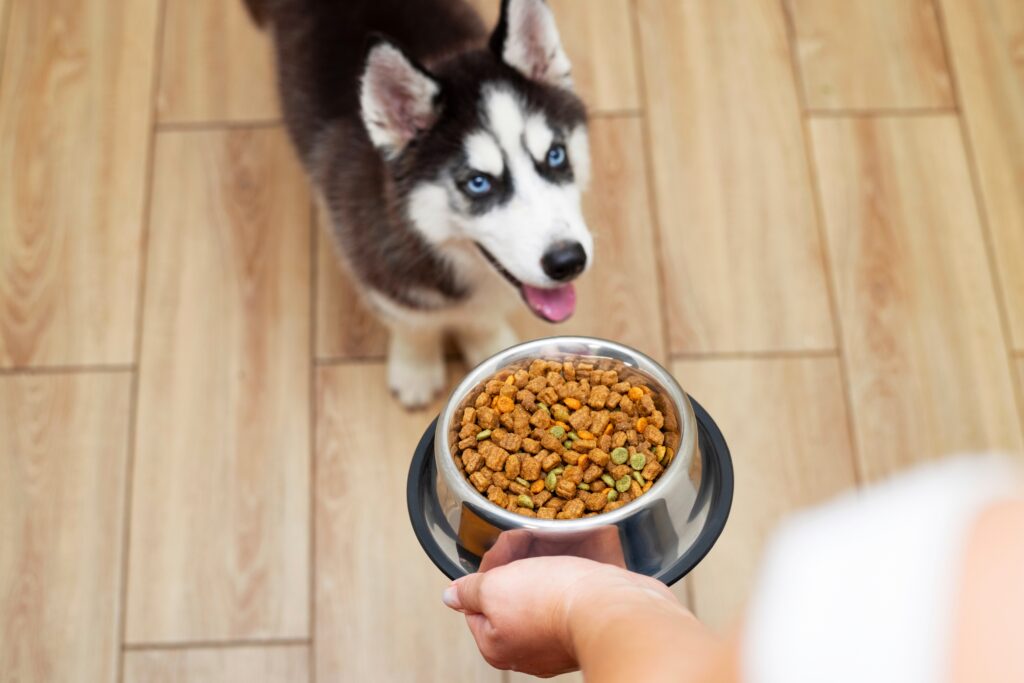
All dogs need a balanced and nutritious diet.
©Andrii Spy_k/Shutterstock.com
These dogs need a good quality meal even though they don’t have a reputation for being picky eaters and will thrive on almost any kind of dog food. Wet food is the simplest way to nourish your Native American Indian dog.
If it turns out to be too pricey, raw feeding is a lot more affordable but more challenging option. It’s the best way to feed your dog, and is often the cheapest, but can be time-consuming. Think of it like meal planning but for your pooch!
Whatever you decide on feeding your dog, it’s crucial to make certain the major ingredient is a healthy source of meat, such as chicken or lamb, as specified on the packaging. If you have kids, they’ll probably want to offer your new puppy numerous treats, especially when they’re training him.
Ensure that you take treats into account when determining your dog’s daily calorie allowance. You may also try healthy substitutions like apple slices and carrot sticks.
Health Concerns
This dog has remarkably few health problems as a result of their rigorous selection in breeding. Hip dysplasia, which is more prevalent in dogs of greater size, is the main issue that this breed faces.
This is a hereditary propensity, so it may be feasible to screen parents to check if they happen to be gene carriers. Hip scoring is also conceivable, though doing so on pups is a common error because hip dysplasia is a disorder that often manifests itself around the age of two.
In order to determine how likely the problem is to manifest, it may be helpful to ask your dog’s breeder to hip-score both parents. Something incredible about this breed is they often live to be nearly 19 years old!
Exercise
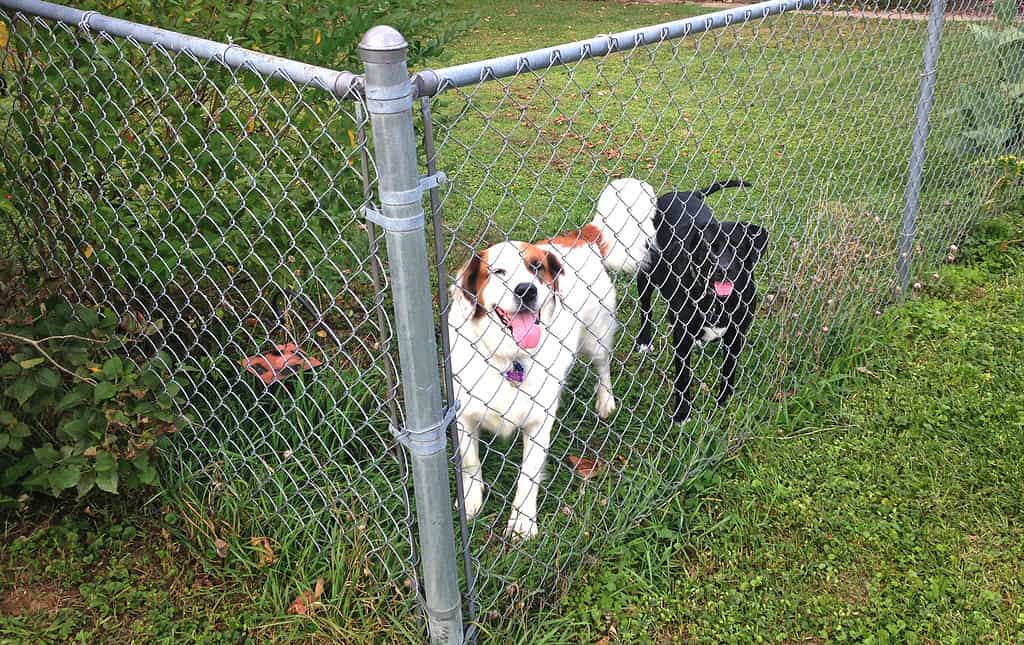
A chain-link fence can be a budget-friendly option for dog breeds that can’t jump it.
©Wendy van Overstreet/Shutterstock.com
This canine which resembles a wolf is extremely energetic and enjoys being outside. These dogs require accessibility to a fenced-in yard in which they are free to engage in self-exercise. Because of this, apartment living is not the best setting for them.
Although these dogs typically act properly off-leash and have outstanding recall, this may be a subject to concentrate on in training classes. To guarantee that your American Indian dog walks gently and without dragging, leash training is crucial.
Teach them to follow you as you walk by gradually introducing the use of a collar or harness. Use praise and treats to encourage appropriate leash behavior. A quick jog might be an enjoyable way to vary the speed of your walks with your dog.
If your pup likes to swim, consider taking them to a location where they may safely dunk their toes in the refreshing water. Because this breed has a thick coat, going for a dip during the warm summer weather can be the perfect way for them to cool off!
Grooming
Weekly brushing is crucial since this gorgeous breed will slowly shed throughout the entire year. These pups will heavily shed their winter coats in springtime and shed excessively for about a week.
During this time, they will need daily brushing to get rid of all the loose hair and maintain a glossy coat. An enjoyable grooming session will help you two connect. Since they have a double coat, they don’t need to have it clipped because it helps them automatically maintain their body temperature.
These dogs are renowned for being exceptionally tidy; little shed hair and little odor make for a tidy dog! You’ll only need to give your furry friend a bath if they find themselves rolling around in the mud! Other than that, bathing should be relatively minimal.
Preserving the Legacy: Supporting Conservation Efforts and Responsible Ownership of Native American Indian Dogs
Native American culture and practices are firmly ingrained in the American Indian dog. We respect the breed’s significance in history and culture for native people by keeping it alive. It acts as an expression of their deep bond with canines and a connection to their cultural past.
The genetic diversity of the American Indian dog is a result of its ancestry and rigorous breeding methods. This diversity must be preserved in order for the breed to be healthy and vibrant over an extended period of time, which is why it is crucial to preserve the breed.
Indigenous peoples have used these dogs as useful labor companions throughout history. The breed’s preservation guarantees that their practical skills, such as foraging, herding, and protecting, will be passed down to succeeding generations.
They are wonderful family pets due to their loyalty, intelligence, and gentleness. By protecting the breed, it is made sure that individuals who value its extraordinary attributes can continue to enjoy these special traits.
Supporting the protection of the American Indian canine helps the larger cause of protecting indigenous and uncommon canine breeds. It increases understanding of the significance of preserving genetic variety and safeguarding the cultural history connected to these breeds.
By appreciating the value of the American Indian dog, we can help to guarantee that it survives and that generations to come can enjoy all of its exceptional traits.
Ready to discover the top 10 cutest dog breeds in the entire world?
How about the fastest dogs, the largest dogs and those that are -- quite frankly -- just the kindest dogs on the planet? Each day, AZ Animals sends out lists just like this to our thousands of email subscribers. And the best part? It's FREE. Join today by entering your email below.
Thank you for reading! Have some feedback for us? Contact the AZ Animals editorial team.

